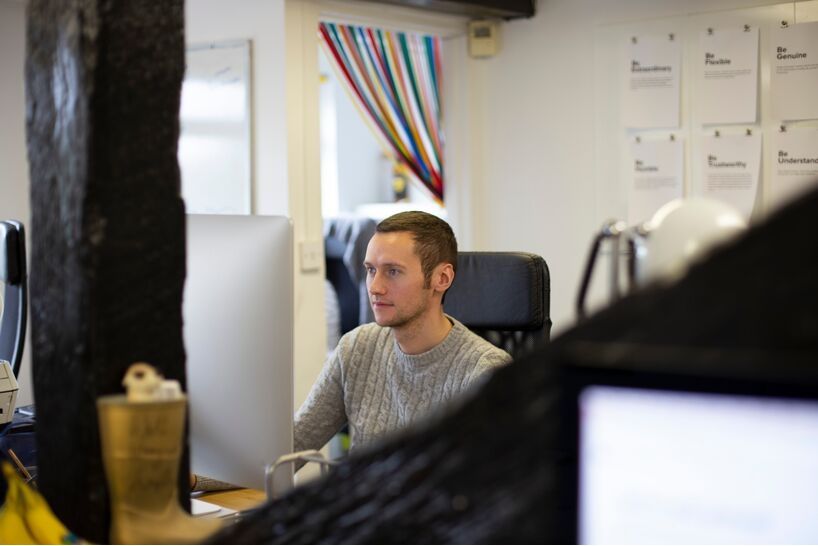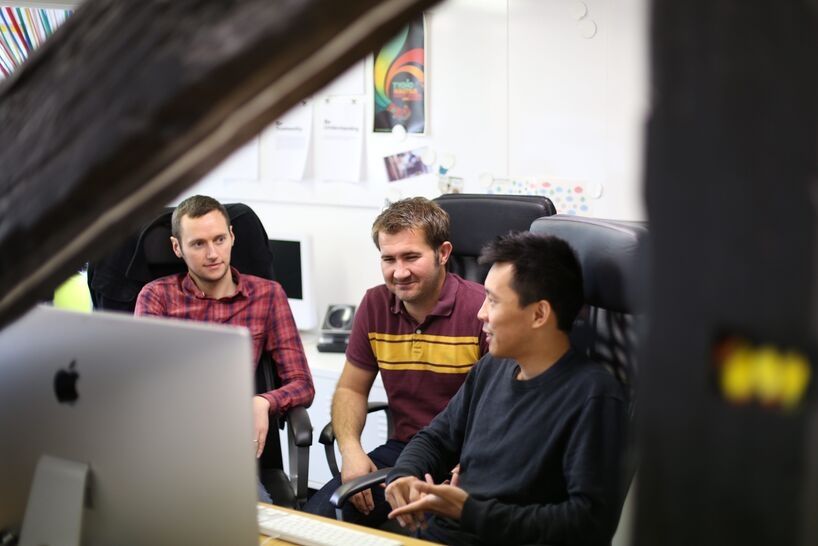By 2020, 30% of the workforce will engage in some form of flexible working, which is an umbrella term that describes any role outside the traditional 9-to-5, five-day week structure. It takes the form of freelancing, remote working, flexitime or job-sharing.
This mammoth shift away from traditional models is, in part, thanks to the up-and-coming tech-savvy generations.
Millennials are the largest segment in the workplace with Generation Z hot on their heels. They’ve grown up with iPhones, tablets and super-fast Wi-Fi – they shop, socialise and save online. It only makes sense they want to work this way too. In fact, it’s reported that a staggering 92% of Millennials identify flexibility as a top priority when searching for a job.
But it’s not just 20-somethings that want and benefit from a more flexible approach to working – everyone can see the appeal of avoiding long daily commutes, setting their own schedules and having more time to invest in friends, family and passions outside the office.
As people get older, they desire a change of pace – in one survey, most over 50s said they wanted to ease into retirement by reducing hours and working flexibly.
The perks of flexible working are apparent for employees, but what about employers? Well, many businesses report incredible results from adopting the practice, including higher employee retention rates, increased productivity and fewer sick days.
In this blog, we explore the benefits of flexible working in more detail and explain how we’ve successfully adopted remote working here at Rubber Cheese.

Benefits of flexible working for employees
Healthier and happier
Where do we start with this? The benefits of flexible working, in whatever form, are numerous…
- You have the freedom to arrange your schedule around non-work commitments, which leads to less work-family conflict.
- You can create an office environment that, as Marie Kondo puts it, “sparks joy. You might want to work at home (plants, pets and pyjamas please), in a local coffee shop or from shared office space.
- You can take regular breaks without being judged by eagle-eyed office managers (sorry office managers, you’re lovely really).
- There’s no office politics.
- You have more independence and the power to choose how and where you work – which is incredibly important as autonomy inspires motivation and productivity.
Saves money
Train fares, ties, tasty Pret lunches – how much of your wage do you actually pour back into work? Our guess is quite a bit.
Flexible working saves money across the board – train fares, petrol, parking, suits, lunches brought out, childcare… all these costs can be reduced or scrapped entirely.

Cultivates creativity and passion
In this increasingly fast-paced world, people everywhere feel pressed for time – so much so, they’re quitting their much-loved hobbies and passions. This is a tragedy that leads to declining mental health and emotional wellbeing.
But here’s the good news – with flexible working, the time and money you save can be invested back into YOU.
As well as being fun and a great way to de-stress, extracurricular hobbies have a positive impact on your productivity at work.
One study found that employees who had an engaging hobby outside of work performed 15% to 30% better than those who didn’t – another observed that spending 45 minutes making art helps boost someone’s confidence and ability to complete tasks.
So, don’t see me-time as selfish – it’s actually essential for peak performance (it’s time to take that Salsa class, Susan).
Benefits of flexible working for employers
Increased productivity from your team
According to one report, working remotely increases productivity by 16% and a two year Stanford study backed this up when it showed an incredible productivity boost from employees allowed to work from home.
Why does flexible working inspire astonishing results like this?
Practically, employees who work from home don’t get stuck in traffic and arrive to the office late. Plus, they’re more likely to make-up time lost for doctor’s appointments, parent’s evenings or other unavoidable meetings – this is because they have autonomy and can manage their own schedules, starting, finishing and adjusting as they need to.
Additionally, people who work from home claim they work better because they’re in a more comfortable environment. It makes total sense – water coolers, tight suits and your colleague’s messy desks are hardly inspiring.
Remote working is especially effective at removing distractions – people spend less time chatting with co-workers and more time dodging non-essential tasks that pop-up in the office throughout the day.

Finding and retaining superstar staff
Losing talent is always devastating – but especially for small organisations who typically can’t compete with the salaries and benefits offered at larger companies.
For small businesses to have a competitive advantage when it comes to finding and retaining superstar staff, they need to offer extra-special perks. Cue flexible working.
Small businesses are in a fantastic position to offer remote, part-time, flexitime and job-sharing roles – these types of jobs appeal to people with childcare responsibilities and anyone who’s looking for a more harmonised work-life balance.
And here’s something really interesting – according to one report, 70% of UK employees feel that flexible working makes a job more attractive to them.
Fewer sick days
Researchers at the University of Minnesota discovered that employees who had the freedom to change their schedules and working environments were much healthier and happier (duh), leading to fewer sick days.
In their study, flexible workers gained an extra hour of sleep per night and went to more doctors appointments. Perhaps most importantly, they also reported a reduction in relationship conflict and psychological distress.
How does this help you?
A thriving team works smarter, stays with the company longer, requires less time off for physical and mental health and makes the workplace a pleasant and uplifting place to be.

It’s cheaper
Remote working saves employees money on commuting AND it saves YOU money on business overheads.
Fewer people in the workplace means less space, heating, lighting, coffee, tea, biscuits… you get the picture. Some businesses have gone one step further and swapped their physical office for a virtual workspace.
As well as this, research shows 30% of people would rather have flexible working than a pay rise.
We’re not suggesting you make your team take a pay cut – that’s archaic. However, you could give outstanding performers the option to work from home or choose their hours instead of increasing their salary.
How we effectively adopted remote working
Earlier this year, our Lead Developer Liam McLaney moved up north to be closer to his family – but saying goodbye was never an option, and why should it be?
Some businesses worry about a breakdown in communication if they offer employees flexible or remote working, but there’s no need with the abundance of technological advances the 21st century has to offer.
We have super-fast Wi-Fi, virtual offices, smartphones, instant messaging, project management tools and video calls, all of which allow people to communicate effortlessly at any time of day (to be honest, we’re probably a little too connected…).
We knew we had all the technology necessary to work with Liam remotely, and we’ve now got a great toolbox of online programmes that allow for effortless collaboration and communication.

Rubber Cheese Wiki
Before Liam left, he created a Wiki for us to store our most important information.
This means we don’t have to rely on instant communication to have key questions answered – we can just check the FAQ documents, processes and how-to guides in one central location.
Zoom
To stay in touch with Liam, we use Zoom – a leading programme in video and audio conferencing, collaboration, chat, and webinars, which works across all devices.
It has a bunch of cool features (including accessibility features) which makes communication simple, including:
- Group messaging
- Simultaneous screen sharing
- High-quality desktop and application sharing
- Streamlined calendaring
- Ability to transcribe meetings
- Virtual backgrounds (not necessary, but amazingly fun)

iPad
We have Zoom installed on a company iPad, so we can connect to Liam effortlessly. He joins us throughout the day for important team meetings, chats and to watch us eat office biscuits he can’t reach. It’s an easy set-up that allows us to connect in a matter of seconds.
We’ve also thought about buying a little robot for the iPad, so Liam can travel around the office at his leisure. We’ll call it – Robo McLaney.
Google Hangouts and Slack
When Liam is in the zone, he comes off the iPad. In these cases, we use Google Hangouts or Slack to communicate. It’s faster and less cluttered than persistent emails.
Liam’s experience on remote working
“I’ve found it surprisingly easy to adjust to working remotely, probably helped by having tools like Zoom and Slack readily available. I thought I’d miss the office banter, and in some ways I do, but I’ve been able to retain some of that through Zoom – apart from being able to move around the office, it captures the feeling of being in the office but with the added benefit of being able to mute my colleagues when I need time to think or get on with work.
In the beginning, I thought I had to make sure I was constantly communicating – making sure people were aware that I was still here and working. But as time has progressed I don’t feel like I need to always appear on Zoom and will now only use it for meetings or when I feel like I need to be part of the office environment.
Having this flexibility has helped me with my work. For me personally, I find I coding requires a lot of mental space to think and to write. So having the ability to shut down the communication and focus on work has been a real bonus. I feel more productive and like I’m producing better code than before.”

Conclusion
Of course, we miss Liam in the office. However, we’ve managed to create an environment where we’re connected emotionally and able to work efficiently. And, after an initial teething period, it’s been easy for the whole team to adjust – in fact, it’s made our team communicate and work smarter.
Flexible working is believed by many to be the future – but what do you think? Has it benefited you, as an employer or employee? Or has it been challenging?
We’d love to hear about your experiences on our Facebook, Twitter and Instagram pages.

Related articles
Announcements
Announcing an exciting new era for Rubber Cheese
Digital
Five benefits of using small digital agencies
Opinion
Does happiness drive success?